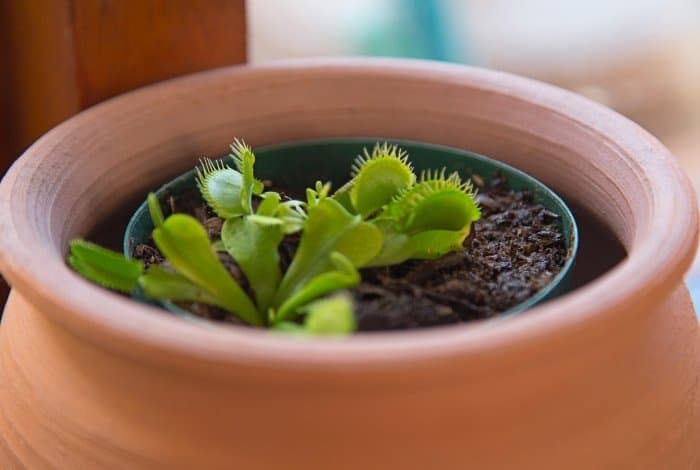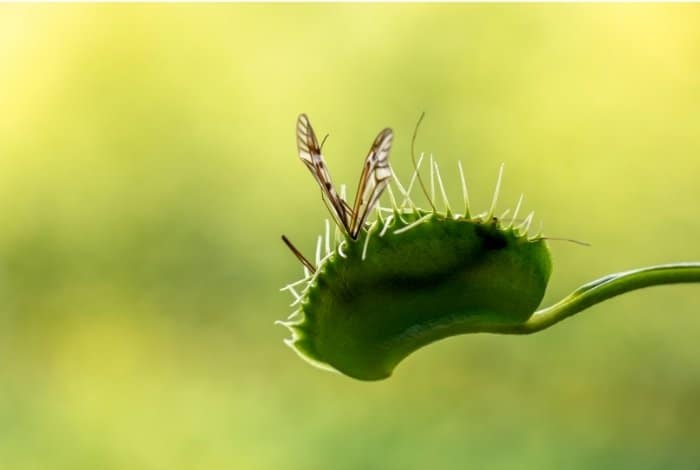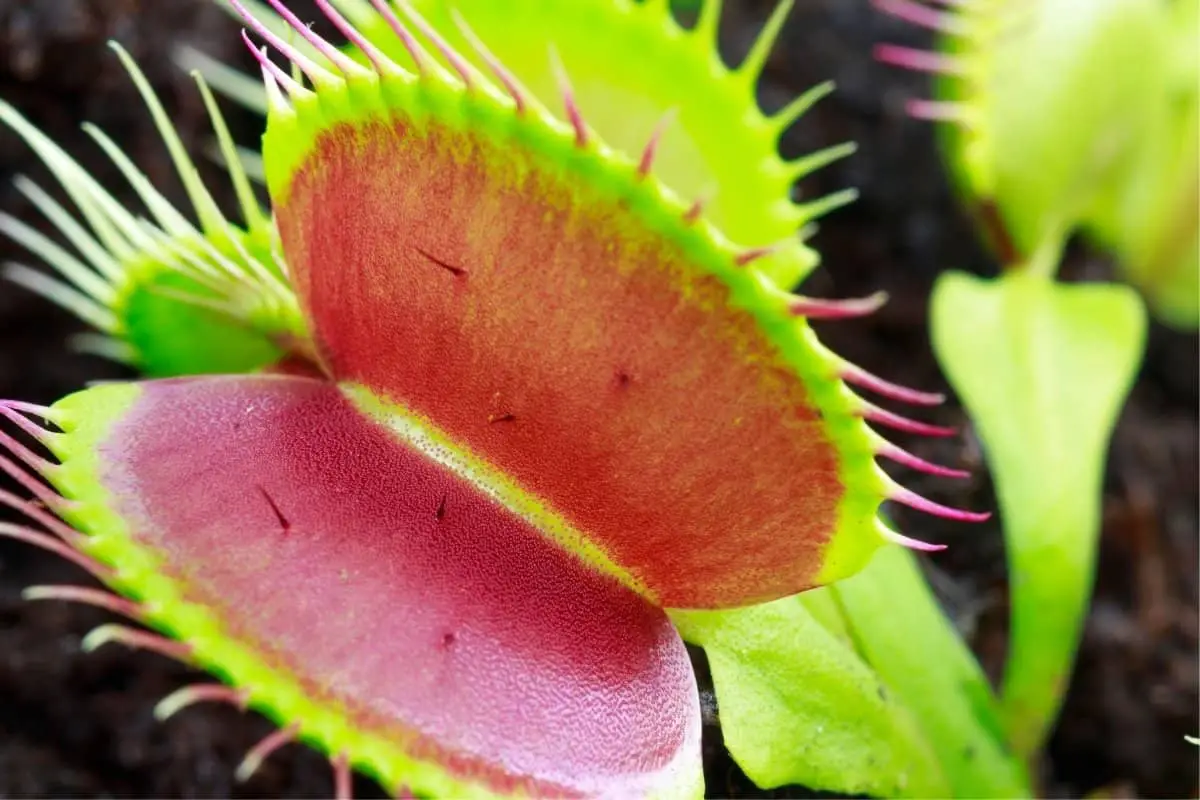Last Updated on December 29, 2021 by Tony Manhart
Venus flytrap also is known as Dionaea muscipula, is one of the most popular carnivorous plants. The plant is a native of North and South Carolina.
They grow in sandy acidic soil with a lot of moisture. Just like every other plant, the Venus flytrap obtains its food from photosynthesis. However, they as well ingest insects as other sources of food.
We will be discussing how to care for a Venus flytrap so read on to find out.
Venus Fly Trap Care
Below are some ways on how to care for your Venus flytrap.

- Indirect sunlight: Venus flytrap will do well with indirect sunlight. Expose your Venus flytrap to at least 4 hours of sunlight and at most 12 hours of sunlight. Be cautious of too hot temperature especially during summer so they don’t burn out. You can also supply them with partial shade. Also, if you grow them indoors, try to put them at the window where they can get some indirect sunlight.
- Water and moisture: Venus flytrap thrives in damp soil. However, excess water can cause the rotting of roots. Your Venus fly trap should be grown in a plastic pot with good drainage. Also, water your Venus flytrap with only rainwater or distilled water. Do not water with tap water. This is because tap water contains a lot of alkaline minerals and they can cause trauma to your Venus flytrap. They only flourish in acidic medium.
- Drainage holes pot: if you wish to plant your Venus flytrap in a pot, you should plant them with drainage holes to allow easy passage of water. It will also reduce excess water which can cause root rot.
- Soil type: grow your Venus flytrap in acidic sandy soil. Make use of sphagnum peat moss to help your plant with water holding capacity and acidity. Sphagnum peat moss will not hold too much water and it will hold just the right amount of water needed for your Venus flytrap to thrive.
More info about Sphagnum Peat Moss
Feeding Your Venus Fly Trap
Another way of taking care of your Venus flytrap is feeding.
Venus flytrap can catch insects and feed by themselves when they are outdoors. However, if you grow them indoors, you might need to feed them a couple of times if you notice they really need feeding.
Also, you need to be careful while feeding your Venus flytrap. Make sure you are aware of each trap you feed so you don’t overfeed one trap more than the others.
Feeding them live insects is actually the best. But most times it may not be so easy feeding them with live insets. So you can feed them with dead insects to make feeding easier.

Fertilizing the Venus Fly Trap
Too much fertilizer or nutrient is actually bad for your Venus flytrap. In fact, you do not need to fertilize your Venus flytrap. They do wonderfully well without the application of fertilizers.
Final Note
On that note, we do hope you have learned one or more things on how to care for a Venus flytrap.
If you have any questions, kindly drop a comment below and we will give you a quick reply.
FAQs
Can a Venus flytrap survive without bugs?
In a scientific experiment, three Venus flytraps were planted at the same time. One was fed a diet of flies, one was not fed anything, and one was fed a diet of beetles. The flytrap that was only fed flies ate 19 flies in 4 days. The one that wasn't fed any bugs ate only 2 flies in the same amount of time and the third plant caught 3 beetles in 2 days.
The results showed that the Venus flytrap can survive without bugs to some extent but had varying success depending on which type of prey it needed to catch.
Can you keep a Venus flytrap as a houseplant?
Yes, the Venus flytrap is easy to grow and maintain. There are some things that you will need to watch out for and take care of in order to keep your houseplant happy and healthy.
The Venus flytrap is an attractive plant because of its shiny leaves and colorful flowers. It may be hard to resist buying one if they are always out at the stores - but it's important to remember that they can be harmful if not properly taken care of!
How often should I water Venus flytrap?
The Venus flytrap is a carnivorous plant that needs a lot of water and light to thrive. The water needs to be about an inch deep for the plant. It also does not like it if the light is too close or if there is too much humidity.
A common misconception with this plant is to water them when their leaves start drooping over their mouth. This will only cause the leaves to rot and die, which will make them less likely to feed on insects when they are hungry. Instead, wait until the soil gets dry and then water your Venus flytrap sparingly.
Why are Venus fly traps so hard to keep alive?
The Venus flytrap plants are notoriously difficult to care for and can only survive for a few weeks.
According to scientists, the reason why is due to the plant's insect-catching mechanism that is so slow that it takes up to 17 days for a fly trapped in a trap to die.
Venus flytrap plants have very low tolerance of heat, cold, and high humidity. They also need a lot of light when they grow and lots of water as well.
What is the lifespan of a Venus flytrap?
What is the lifespan of a Venus flytrap? One day in the wild, this carnivorous plant can sometimes live over 10 years. However, in captivity, its average lifespan is about 5 to 6 years.
Venus Flytraps have been around for about 150 million years. They have evolved into one of the most intriguing plants on earth with their unique look and jaw-closing capabilities.
How often do Venus fly traps need water?
Venus fly traps need to be water periodically to survive. They have a very high water demand and it's important to provide them with water often.
When Venus fly traps need water, they usually drink the water droplets on their leaves. Sometimes they will also eat small insects that fall onto their leaves.
Venus fly traps need fresh water every two or three days to stay alive.
It would be best to check your Venus fly trap's water level every two or three days to make sure that the plant is getting enough nutrients.

Eunice is a gardener who loves to play in the dirt. She starts her day early in the morning, watering her plants and tending to her garden. She loves the smell of freshly cut grass and the feeling of sunshine on her back as she works. She‘s a master at creating beautiful flower arrangements and can often be found humming a tune as she tends to her plants. When she‘s not gardening, she loves to read books about nature and share her knowledge with others. Eunice loves gardening so much that she‘s even been known to talk to her plants!



